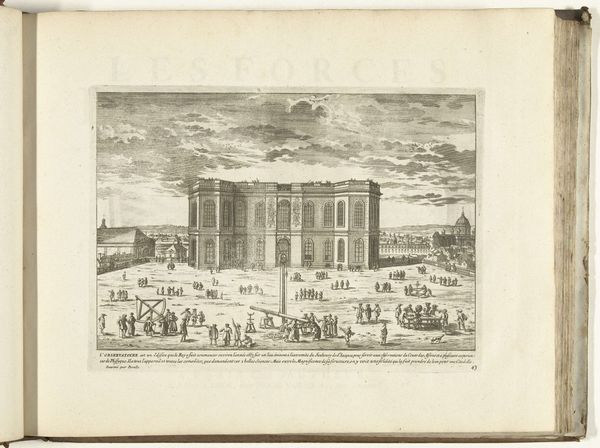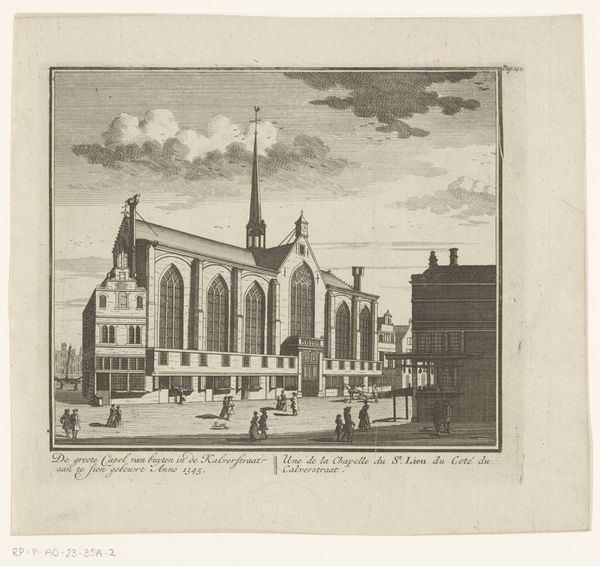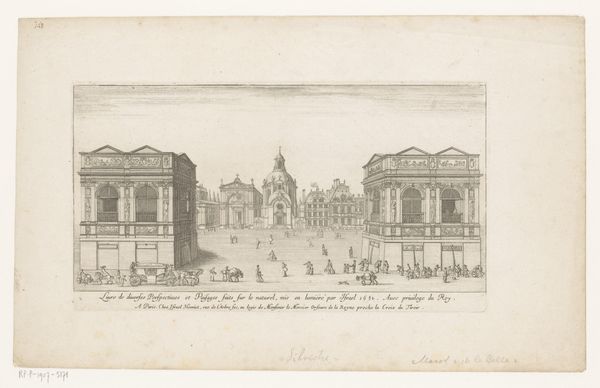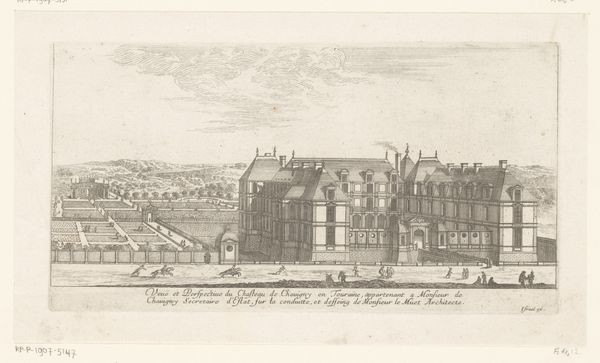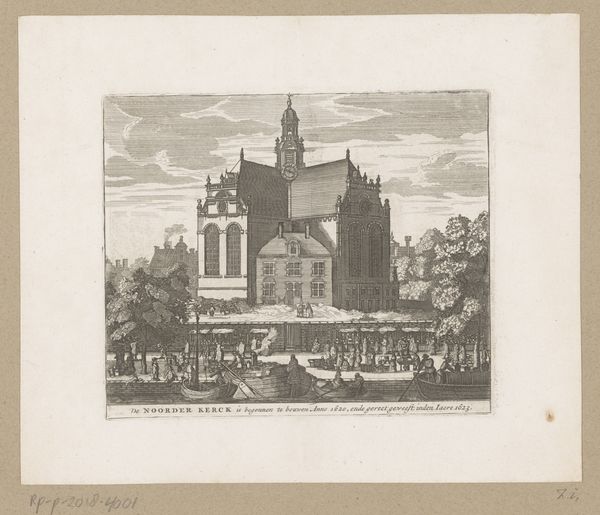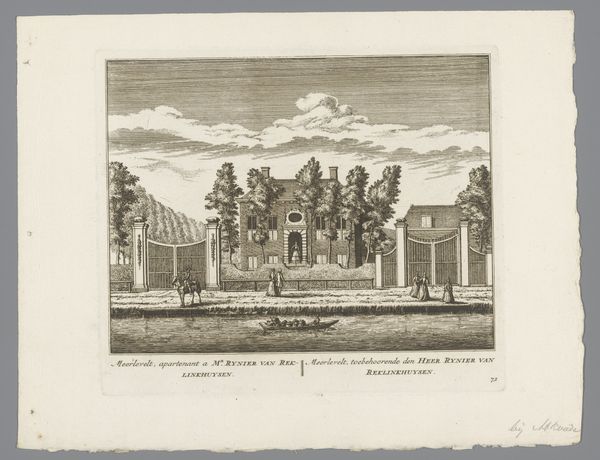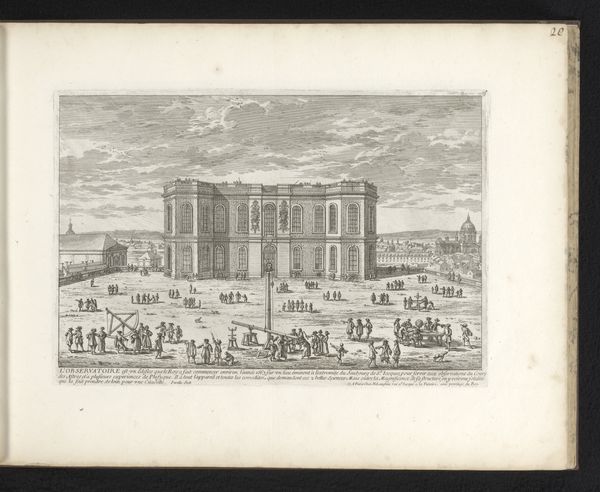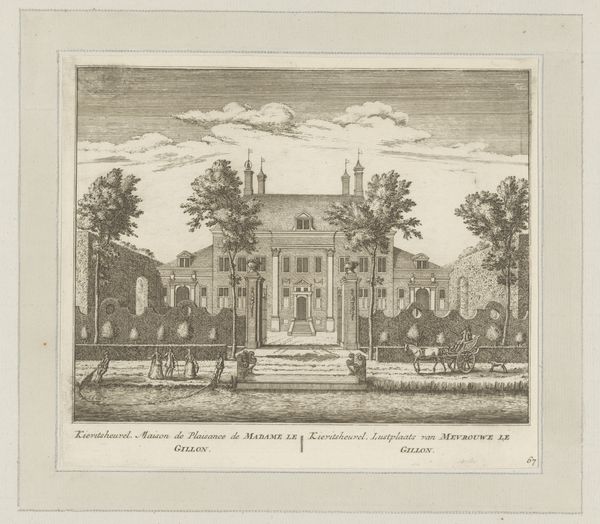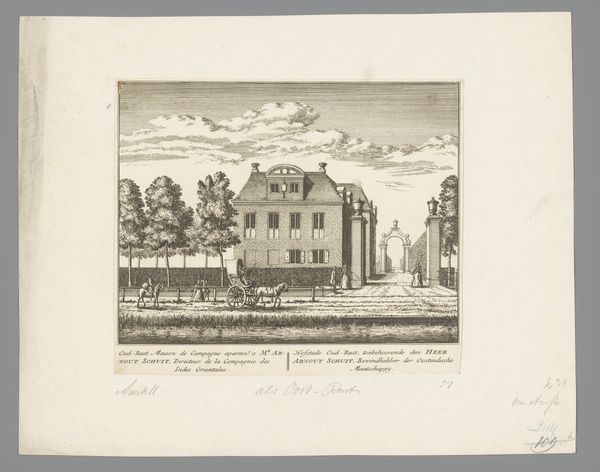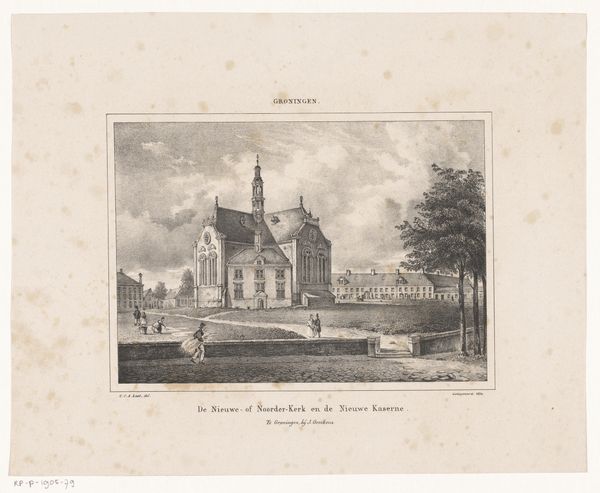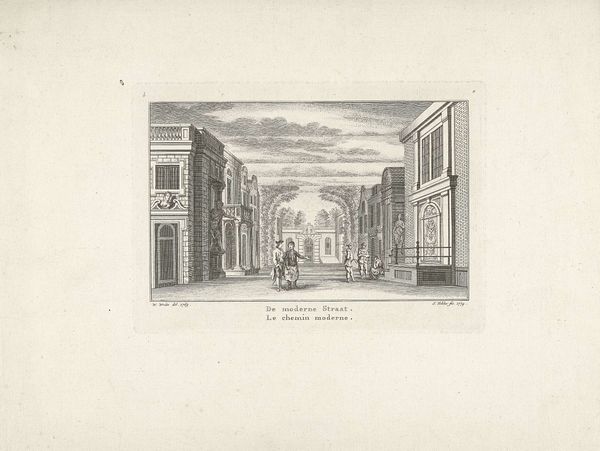
print, engraving, architecture
#
baroque
# print
#
old engraving style
#
landscape
#
cityscape
#
history-painting
#
engraving
#
architecture
Dimensions: height 115 mm, width 202 mm
Copyright: Rijks Museum: Open Domain
Curator: Oh, I’m immediately drawn to the hustle and bustle depicted in this work, though rendered in such fine lines. There’s something quite lively about the composition, don't you think? Editor: It’s captivating. What we're looking at is “View of the Hôtel de Sully,” an engraving crafted around 1657 by Israel Silvestre. It currently resides here at the Rijksmuseum. Curator: An engraving... the level of detail achieved with such precision is remarkable. You know, reflecting on its historical context, this work, like many from this period, serves not only as a landscape, but as a document of its time. It’s speaking to the patronage system. Editor: Yes, and look at how Silvestre captures the social life unfolding before the grand architecture of the Hôtel. Each figure, rendered so minutely, has a presence. I feel almost like I'm eavesdropping on their conversations. There is that beautiful dance between line and space; the artist’s vision and the real Hôtel. Curator: Indeed. And that very tension reflects the society it depicted, so rigidly hierarchical, yet buzzing with an emerging bourgeois energy that demanded its own representational space. Note the positioning of the figures in relationship to the architecture, this relates directly to power structures... Editor: I hear you. Thinking about Silvestre himself, I’m wondering what personal mark he’s made? Does this engraving simply reiterate social order or does it offer a perspective of resistance? Does he see himself in any of those figures, or even the dogs running in the foregound? I imagine him wondering what story this moment really tells. Curator: That's the fascinating tightrope we, as viewers, get to walk when approaching such art. We see the literal depiction, sure, but we’re also prompted to interrogate the circumstances surrounding it, the very power dynamics that shaped its creation. It is the artist's very participation in a culture that we must examine. Editor: Absolutely. Works like these become portals through which we renegotiate our own understandings of history and ourselves. That is to say, it reflects as much of us as it reflects the Baroque. Curator: Ultimately, this detailed cityscape not only invites us to admire the beauty of Baroque architecture, but compels us to contemplate the narratives—visible and invisible—embedded within the stones. Editor: And to remember that every line, however finely drawn, carries with it the weight and whisper of a lived moment. I'm seeing it, somehow, as new again.
Comments
No comments
Be the first to comment and join the conversation on the ultimate creative platform.
